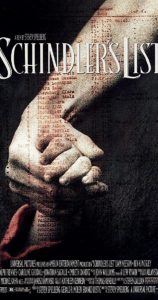 I’ve cancelled my Netflix subscription. It had nothing to do with the airing of their controversial movie “Cuties,” which I watched and found disturbing, though worthy of discussion. I’m letting go because I wasn’t getting $14.22 a month worth of enjoyment out of Netflix. I didn’t want to get sucked into any TV series. I’d watched all the documentaries that struck my fancy. And most of their movie offerings were either decades old or something new that didn’t interest me.
I’ve cancelled my Netflix subscription. It had nothing to do with the airing of their controversial movie “Cuties,” which I watched and found disturbing, though worthy of discussion. I’m letting go because I wasn’t getting $14.22 a month worth of enjoyment out of Netflix. I didn’t want to get sucked into any TV series. I’d watched all the documentaries that struck my fancy. And most of their movie offerings were either decades old or something new that didn’t interest me.
Before my subscription expired, I did my darndest to see anything that still needed seeing. Two movies stand out. One is “The Social Dilemma,” which explores the impact of social media on human behavior, with tech pioneers bemoaning the monster they created.
But that’s not what this column is about. I’m writing about “Schindler’s List,” a movie that came out in 1993 but one that I’ve always been too big a coward to watch. I don’t handle the Holocaust well. It’s hard for me even to read a book about what the Nazis did to the Jews, though I’ve read many. “The Book Thief” by Markus Zusak, “The Diary of Anne Frank” and “Night” by Elie Wiesel, a horrific autobiographical account of his survival as a teenager in the Nazi death camps, are three of the best.
Somehow, though, it’s easier to read a book about the Holocaust than to see its realities on the screen. That’s why I went 27 years without watching “Schindler’s List.” Now it was time. Neo-Nazis parade the streets of this country waving swastika flags. High schoolers raise their right arms in “joking” Sieg Heil salutes. Synagogues and temples are attacked. Too many Americans seem to have forgotten, or perhaps never knew, what Adolf Hitler and his followers were all about.
I knew that “Schindler’s List” was a brutal, unflinching look at Krakow, Poland during the Nazi occupation of the early 1940s. I wasn’t prepared for just how brutal and unflinching it would be. Based on a true story, the movie shows how industrialist Oskar Schindler, who starts out as a profiteer, becomes a hero by saving the lives of more than a thousand Jewish men, women and children slated to die at Auschwitz. He staffs his factory, which makes enamelware for the German army, with Jewish workers for pragmatic reasons at first. But when the SS—under the command of the cruel and psychotic Amon Goth—begins exterminating Jews by the thousands in the Krakow labor camp, Schindler’s eyes are opened. He does everything in his power to protect his workers while still schmoozing with the Nazis.
“Schindler’s List” won seven Academy Awards, including Best Picture and Best Director (Steven Spielberg). Filmed almost entirely in black and white with a hand-held camera, the movie feels like a documentary. Spielberg hoped that his film, hailed as a landmark in the history of Holocaust storytelling, would be a tool to combat ignorance.
Ignorance is certainly rampant these days. There are those who never heard of the Holocaust. Those who grossly underestimate how many Jews died at the hands of the Nazis. (Correct answer: six million.) And, most frightening of all, those who deny the Holocaust really happened. That’s why I hope “Schindler’s List” will always be available for streaming. And why I wish it were shown to every high school student in the United States of America.
The movie is more than three hours long. I initially planned to watch the first half one sunny autumn afternoon and the second half the next, as though daylight and pleasant weather would make it more bearable. That’s not how it worked out. As darkness fell one evening, I settled onto the sofa and watched “Schindler’s List” in one sitting. Difficult as it was, I believe that’s the right way to experience it.
Because it ought to be uncomfortable.
(September 3, 2020)